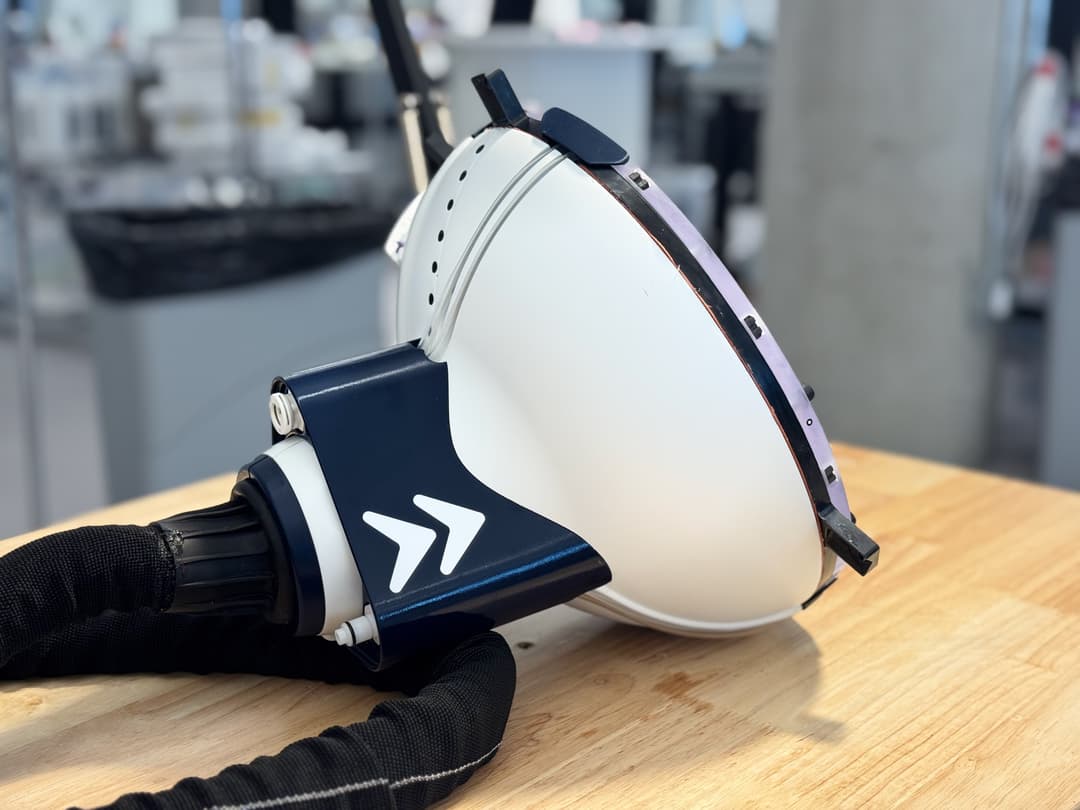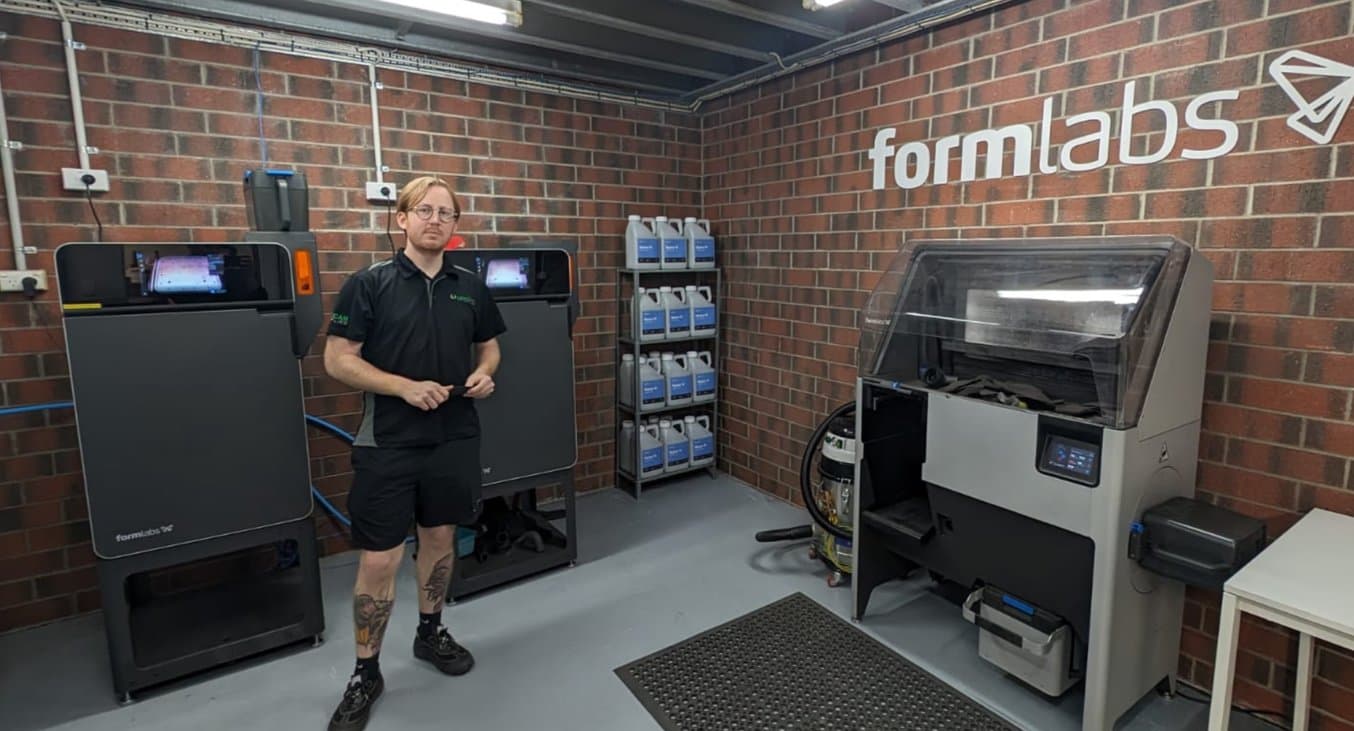
GMZ Medical is an Australian expert in producing orthotic insoles, with companies that cover everything from providing supplies to design software to in-house production. These diverse offerings mean they have a deep knowledge of every aspect of orthotic production and experience in various workflows and materials. Not only does their orthotic manufacturing lab, CADCAM Orthotics, use two Fuse 1+ 30W selective laser sintering (SLS) 3D printers, but their supply arm, PodCAM Supplies, recommends the Fuse ecosystem to orthotic manufacturers and healthcare providers.
Konrad Job, resident Podiatrist at GMZ Medical, says that this combination of businesses, which also includes LaserCAM Orthotics, a software solution, allows GMZ Medical to test every aspect of foot orthotic production so that they can dial in the optimal setup and workflow.
“We are trying to build a blueprint for other people to follow, so we want people to see that we can use our own software in our own production cycle cost-effectively and make a really successful business from that. We thoroughly test the entire process before we recommend it to other people. ”
Konrad Job, Podiatrist, CADCAM Orthotics
CADCAM Orthotics’ ‘blueprint’ for a 3D printed insole production workflow uses Formlabs’ Fuse ecosystem. We sat down with Job to learn more about the benefits of adopting digital workflows, as well as how this blueprint solves the key pain points of orthotic manufacturers and healthcare providers.
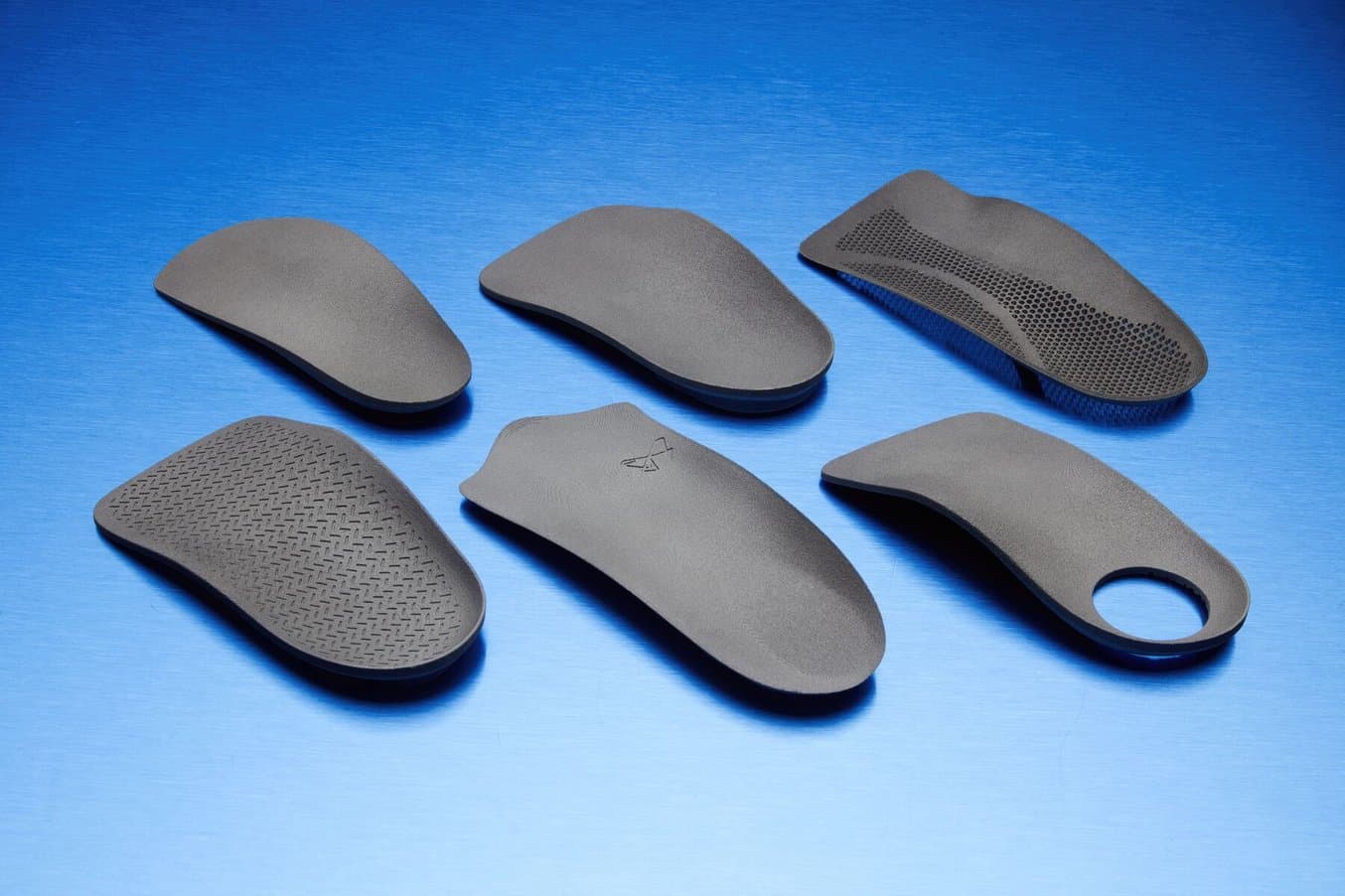
Revolutionize Your Insole Production With Formlabs Fuse 1+ 30W
Step up your insole production while saving time and money. In this webinar, we discuss why Formlabs Fuse 1+ 30W is the perfect solution to begin transitioning to digital manufacturing or scaling your production affordably and efficiently.
3D Printing: An Easy Workflow in a Clean Environment
CADCAM Orthotics is the manufacturing arm of GMZ Medical. They began manufacturing foot orthotics in 1997 using a CNC for EVA orthotics and, several years later, started vacuum forming polypropylene products.
For polypropylene vacuum formed products, the workflow would start with the receipt of a 3D scan. CADCAM Orthotics would then have to design a positive model in CAD, machine it in medium density fiberboard (MDF), and then use multiple layers of vacuuming forming over the MDF positive to manufacture the orthotic with the correct specifications.
Job says, “The pain points were how many steps, that's number one, and all of the associated training that would come with all of those steps, making sure that all of our staff members could complete them repeatedly. Over time, we would end up with one guy who was really good at the production process.”
Not only was training an issue, but MDF made for a dusty, unpleasant work environment. Job says, “MDF wasn’t nice to work with, it's dusty, you have to wear masks. We tried high-density foam, but it melted a little bit. When we switched away from having to machine foot positives and towards 3D printing, there was not a single staff member who was unhappy.”
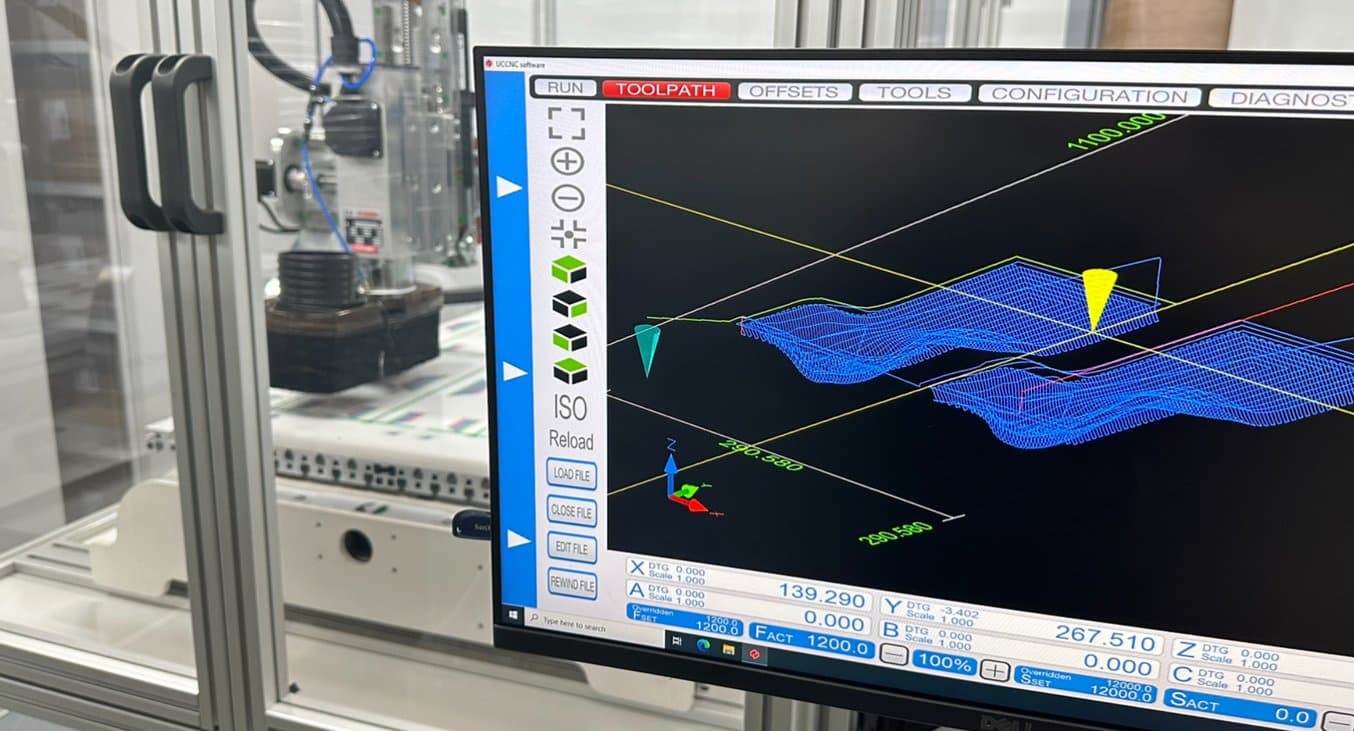
EVA insoles have to be manufactured with a CNC, which is compatible with designs created via LaserCAM Orthotics.
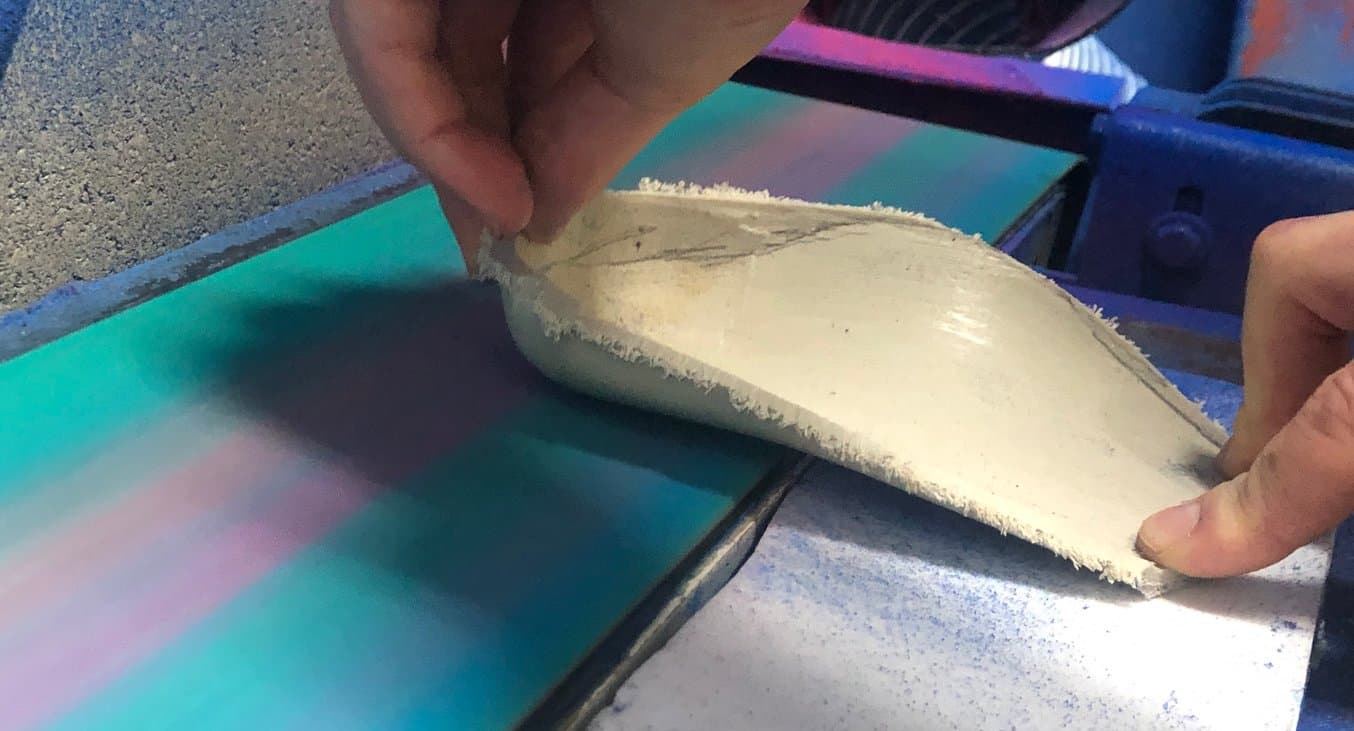
Vacuum forming multiple layers to create insoles with the proper stiffness.
A third issue with vacuum forming was surface finish. As Job says, “you've put your thumb on it, there's a hair on it. You’d constantly have to be careful not to scratch it when you're grinding the other vacuum formed layers.”
Initially, CADCAM Orthotics replaced polypropylene production with outsourced 3D printing. They spent two years outsourcing 3D printing. Job says, “They were great to work with, super supportive, but ultimately, we didn't really have the level of control over production time and also the fine details including how much powder was recycled. We wanted to check the parts off the printer to our own standards.”
Wanting greater control over the 3D printing process, in 2022, CADCAM Orthotics decided to bring 3D printing in-house.
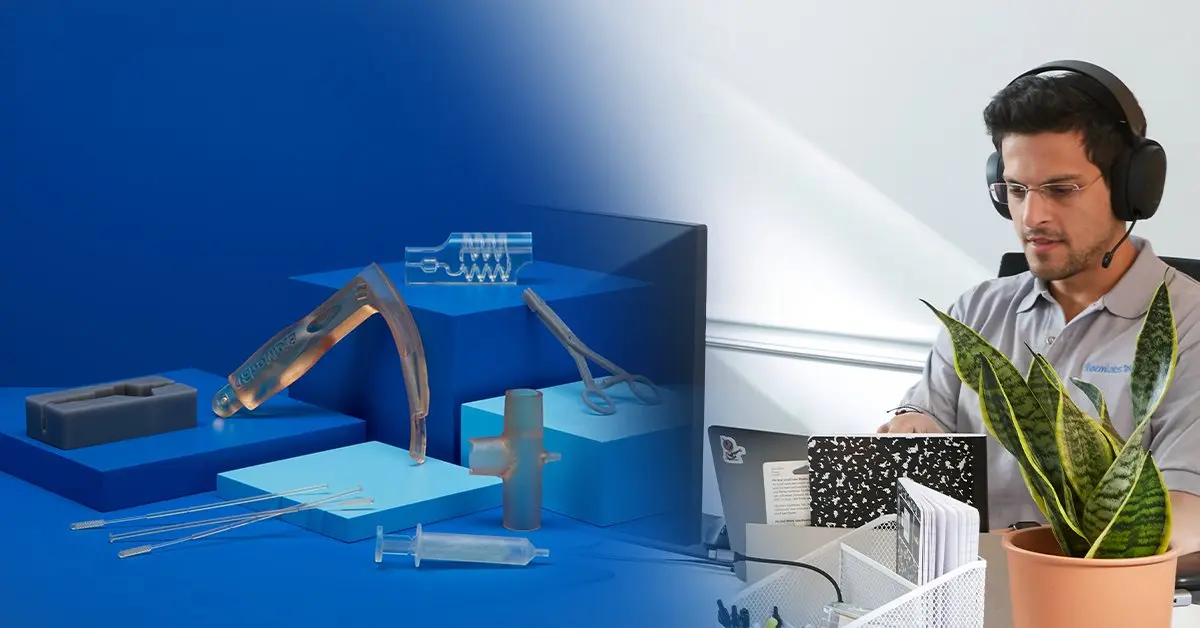
Talk to Our Medical Sales Team
Whether you need to make patient-matched surgical tools or are prototyping for a cardiac medical device, we’re here to help. Formlabs Medical team are dedicated specialists who know exactly how to support you and your company's needs.
Bringing Production In-House With the Fuse Ecosystem
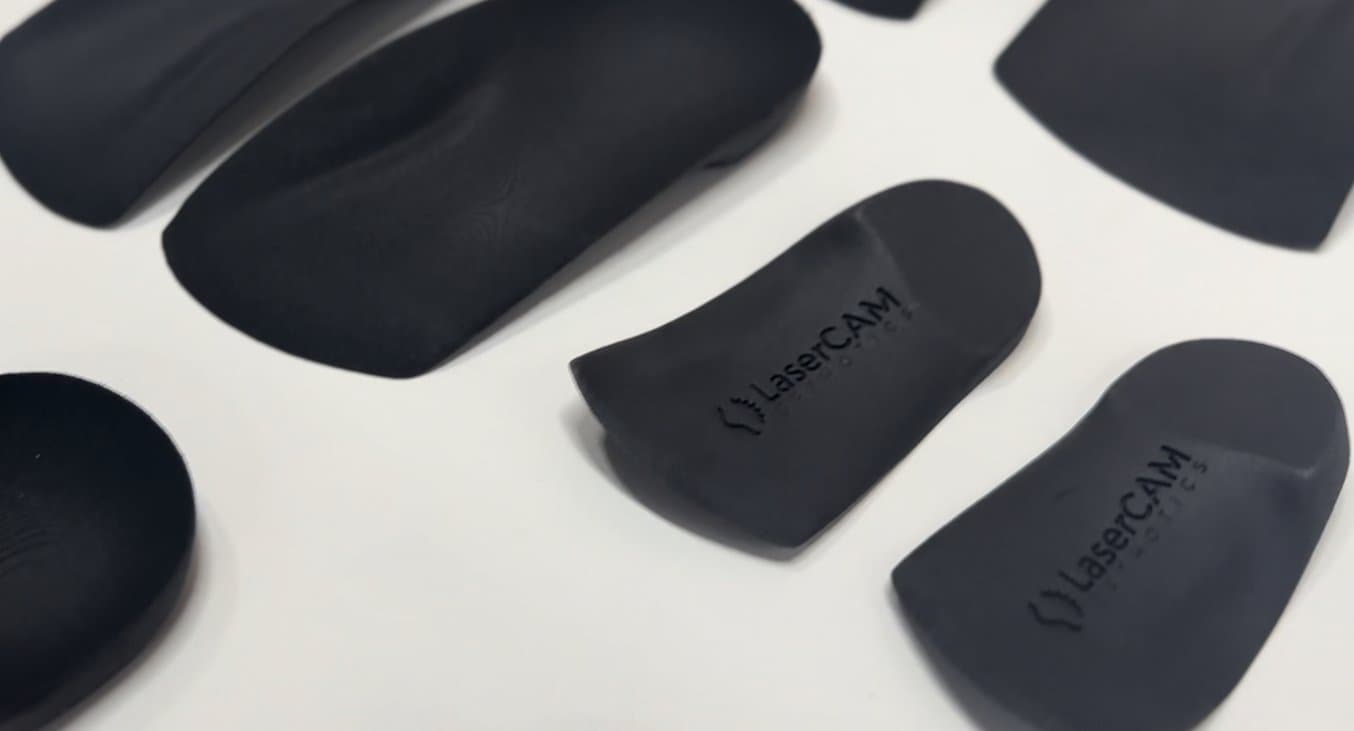
LaserCAM insoles printed in-house on Fuse 1+ 30W in Nylon 11 Powder cost 40% less than outsourcing 3D printing.
Ultimately, outsourcing is a great way to validate the 3D printing process before moving to in-house production. Bringing production in-house allows for control over the entire production process and faster turnaround times; for CADCAM Orthotics, four working days in-house versus 10 with outsourcing. Plus, moving to 3D printing has resulted in significant manufacturing savings.
| Production method | Cost per pair | Labor to produce (in hours) | Lead time |
|---|---|---|---|
| Traditional thermoforming | $77.20 | 1.5 | 10 working days |
| Outsourced printing | $92.63 | 0.7 | 10 working days |
| In-house printing | $54.29 | 0.8 | 4 working days |
With in-house 3D printing comes greater control over production cycles. At CADCAM Orthotics, this means printing every day, for at least five builds a week — and sometimes an additional one over the weekend, totaling around 30-50 pairs of rigid insoles a week. With SLS 3D printing, prints have a cooldown time, so CADCAM Orthotics factors this in when printing, unloading and starting a new print batch during the work day so that prints can be post-processed that day, and new ones ready the next.
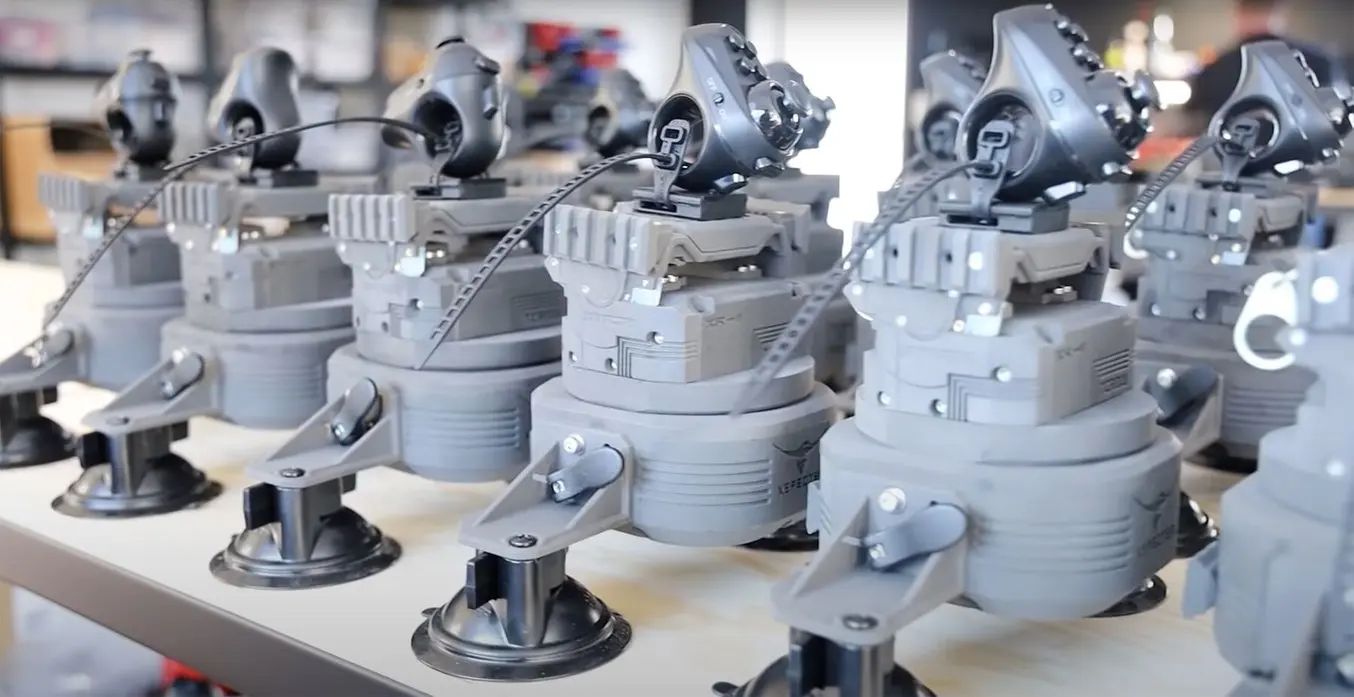
SLS for End-Use Production
3D printing for end-use production is not only possible, it's more affordable, agile, and scalable than ever with the Fuse SLS Ecosystem. Visit our SLS for Production page to compare production methods, learn about bulk powder pricing, and see production in action for 15 different manufacturers currently using the Fuse Series.
Easy, Efficient Workflows
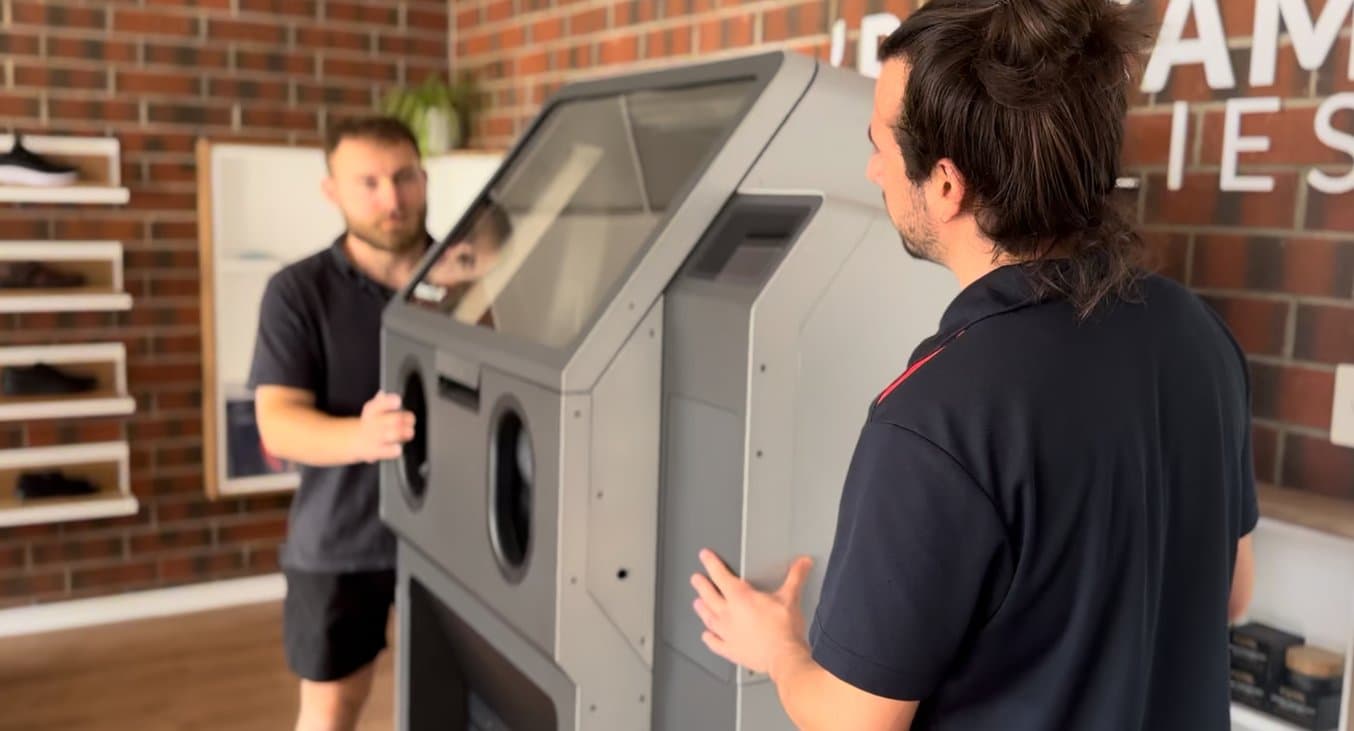
CADCAM Orthotics recently added a Fuse Blast to their workflow, enabling the cleaning of insoles in 78% less time.
Job notes that with traditional workflows, they’d end up with one expert technician. “But now with 3D printing, we've got at least five guys that can do it. So training is huge.” The ease of 3D printing workflows on the Fuse ecosystem mean that not only can all workers be more productive, but the workflow is easier and cleaner than traditional ones.
“The workflow excites me because it's the first time that we've really had parts that we can just take off a machine and cover, and that feels really good. I would personally rather spend time designing parts than grinding parts.”
Konrad Job, Podiatrist, CADCAM Orthotics
In cutting out the physically-demanding grinding and finishing required by traditional workflows, the Fuse ecosystem frees up Job and others at CADCAM Orthotics for higher-value tasks, including design.
For cleaning and polishing, CADCAM Orthotics utilizes Fuse Blast, a fully automated solution, to deliver products that are clean to the touch — in 78% less time. Plus, the cleaning is contained, keeping workspaces and workers cleaner and providing a more pleasant work environment.

The Fuse Blast can automatically clean an entire build of insoles, saving time.
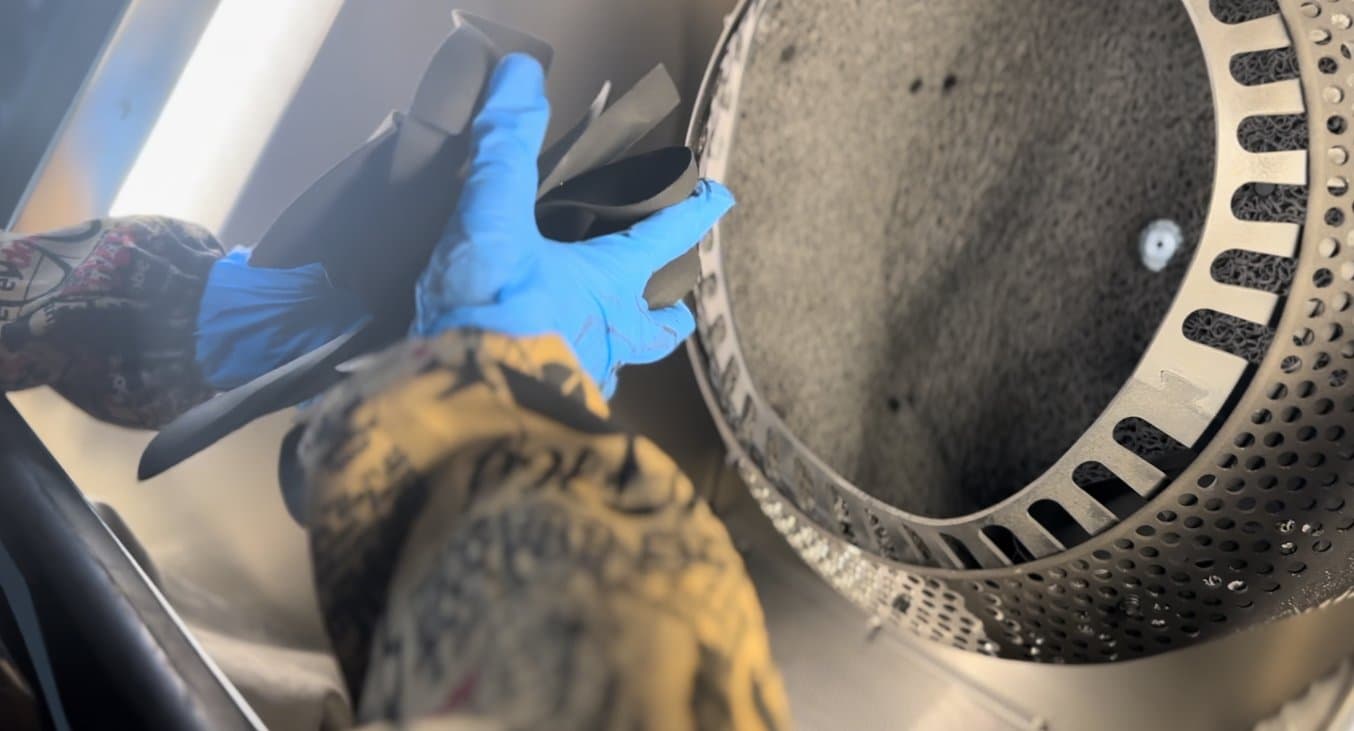
Parts come out of Fuse Blast clean and ready for covering.
“With the Fuse Blast we basically have a completely perfect production loop where there's no manual post-processing. We model it, load it in the printer, and we cover it, so it's very, very easy.”
Konrad Job, Podiatrist, CADCAM Orthotics
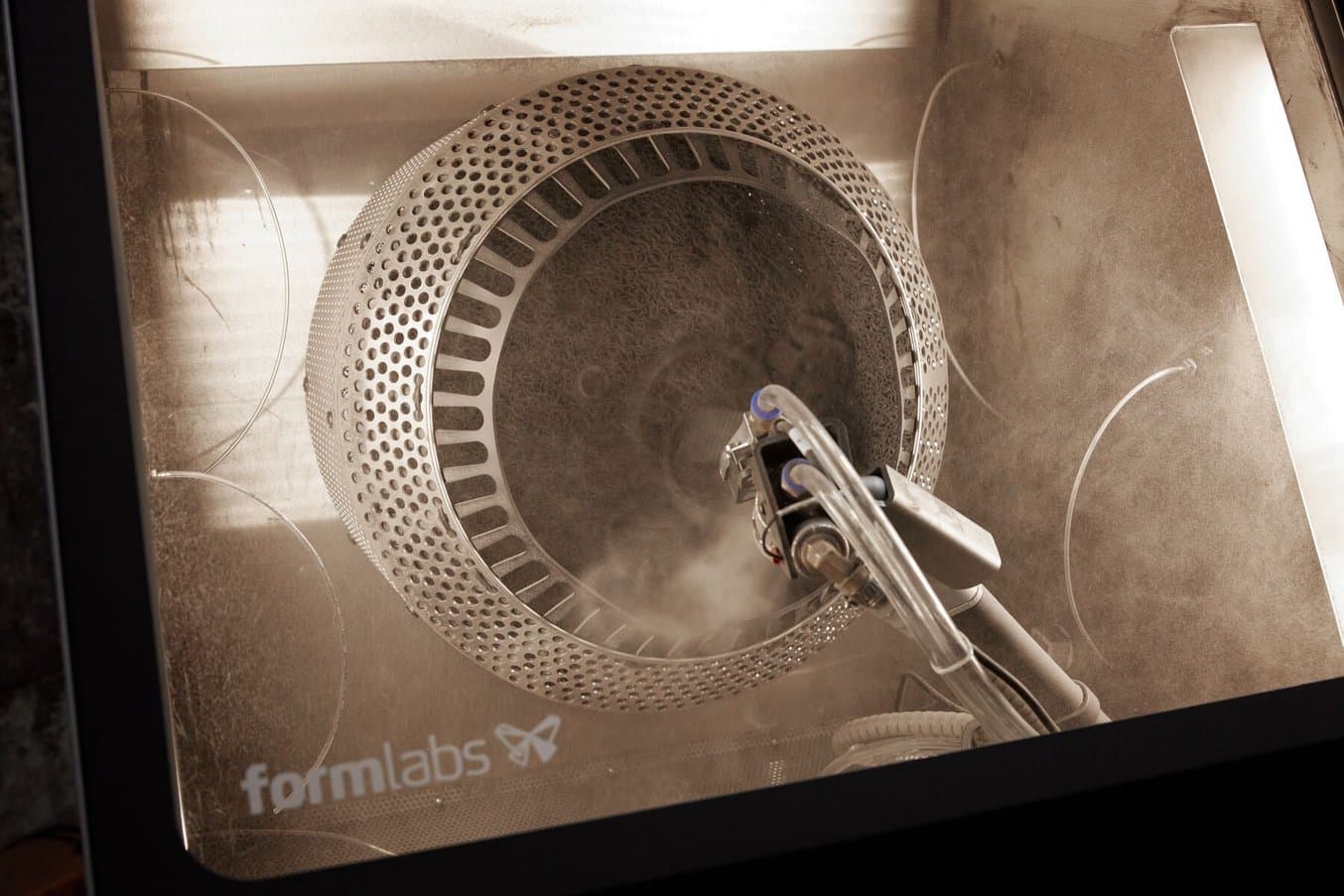
Post-Processing SLS Parts in 10 Minutes: Fuse Blast for Insoles
The Fuse Blast significantly reduces post-processing time. Our speaker Shiden demonstrates how to depowder an entire build chamber of 40+ insoles in just 10 minutes, effectively reducing the post-processing time from 45 min by 78%.
Redundancy Adds Security
Job says that, “Having implemented CNC technology and selling CNC systems, we became aware very early that redundancy is really important with manufacturing. So when we're evaluating SLS machines, we have to be able to buy two.”
Even with the most reliable 3D printers, user error or general maintenance needs may mean downtime for a printer. With a single printer, this means a total halt in production. Having two printers, you can ensure production never stops. Redundancy also enables flexibility should rush-jobs or large orders arise.
“The price point of the Fuse 1+ 30W enabled us to purchase two, and the system was scalable. So that was our first criteria, the redundancy element and being able to buy multiple units.”
Konrad Job, Podiatrist, CADCAM Orthotics
In addition to redundancy, having two printers enables flexibility when scaling production. After increasing the number of builds on a second printer, additional units can be added — all while utilizing the same workflow, and without the need to refuse orders as you wait for the additional printers to be set up.
The Benefits of a Small Footprint
“With the commercialization of our software, it was really important that we had a SLS printer that was small enough to fit within a healthcare clinic.”
Konrad Job, Podiatrist, CADCAM Orthotics
LaserCAM Orthotics is GMZ Medical’s software solution for designing orthotic insoles, and the software that CADCAM Orthotics uses for in-house design prior to production. In-house production allows CADCAM to test systems and workflows before recommending them to clinics via PodCAM Supplies.
PodCAM Supplies’ customers are healthcare clinics, so not only does LaserCAM need to be easy to use, but the printers PodCAM Supplies recommends must take into account the needs of a healthcare clinic, including the footprint of the printer and post-processing solutions, pricepoint, and the ease of workflows.
“We couldn't put a half-a-million-dollar behemoth in a small, little grinding room and change that to a printing room, but we could with the Fuse. There were big commercial benefits to advertising the Fuse printer and making healthcare professionals aware that it would be something that they could do in-clinic.”
Konrad Job, Podiatrist, CADCAM Orthotics
Though the Fuse Ecosystem has a small footprint, CADCAM Orthotics can fit up to 12 pairs of insoles in a single build. Job says that, “As we distribute CAD software, the Fuse has been hugely competitive compared with larger format SLS and MJF machines for our customers that want to print in their own clinics and smaller, more boutique labs.”
A Versatile Materials Library on a Single Printer
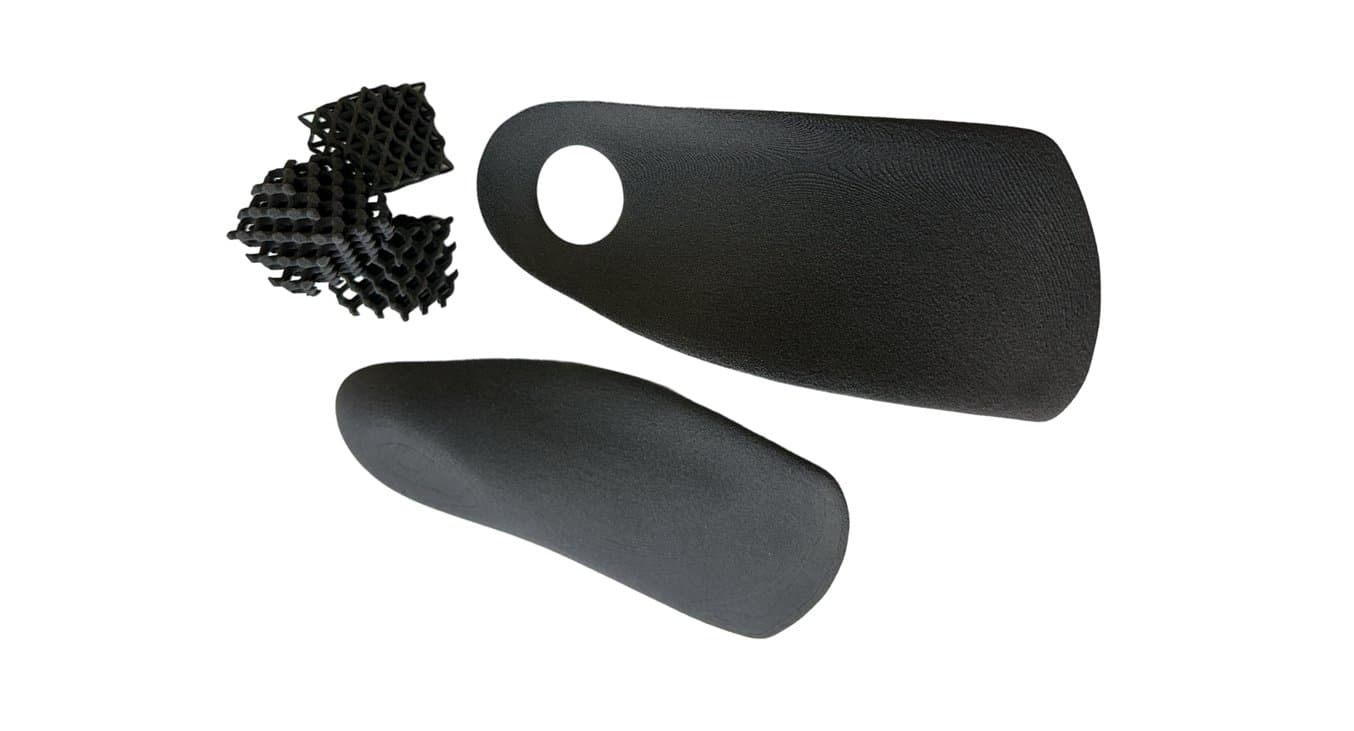
Samples 3D printed on Fuse 1+ 30W showcase designs from LaserCAM Orthotics and the material properties of Nylon 11 Powder.
When CADCAM Orthotics wanted to start 3D printing, they were looking at options for polypropylene, then the industry standard, a standard that has since turned to nylon. When looking at 3D printing materials for nylon insoles, Job says, “It was important to have parts that had adequate strength in terms of tensile strength and flexure testing, so that they didn't shatter or deform.”
On Fuse 1+ 30W, Nylon 11 Powder is the ideal material for printing rigid orthotics with high ductility and long-term stability, including insole shells. Additionally, parts printed with Nylon 11 Powder are environmentally stable, absorbing very little moisture, feature resistance to light, heat, and chemicals, and are certified biocompatible for skin contact.
| Materials Comparison Table | Nylon 11 Powder |
|---|---|
| Ultimate Tensile Strength | 49 MPa |
| Elongation at Break (X/Y) | 40% |
| Flexural Strength | 55 MPa |
| Flexural Modulus | 1.4 GPa |
Request a free sample part to evaluate the performance and quality of Nylon 11 Powder insoles for yourself.
Material variety also influenced the decision to adopt the Fuse 1+ 30W. Job says, “We wanted to print in Nylon 11 Powder initially to replace our poly, and it's been a good product for that. But what if we wanted to print different types of products that use Nylon 12 Powder, polypropylene, or TPU? Not to mention what other materials Formlabs might develop in the next 10 years.”
Fuse 1+ 30W is capable of printing six powders, including biocompatible materials, and Formlabs’ in-house materials experts are constantly working to develop new, industry-leading materials.
This growing material library is a benefit to the Fuse ecosystem. Job says, “As we scale our own production with the Fuse, we will be in a position to offer a wider range of materials with greater redundancy compared to competitors, so that definitely will be giving us a competitive advantage, as well.”

Mechanical Performance Analysis of 3D Printed and Traditionally Manufactured Rigid Insole Shells
This study investigates material properties and manufacturing methods for custom orthotic insoles: Formlabs Fuse 1+ 30W and Nylon 11 Powder, HP 3D High Reusability PA 11, and traditionally manufactured polypropylene.
LaserCAM Orthotic Design Software
There are numerous orthotic design software solutions available, so it’s a very competitive space. Job acknowledges that each software solution has its own unique features and benefits. LaserCAM therefore focuses “on medical device design that uses prescriptive data directly to generate orthotic models.”
They also try to keep an open platform, allowing people to work with their preferred technology. Job says, “ We don't lock our file types to only work with one printer or one type of 3D scanner. We try to let any scans into our system and produce an STL file that can go to any CNC in the past, or 3D printer now. I think that has helped us because we don't have the same level of bias, so we can directly recommend what we think is the best hardware to work with the software.”
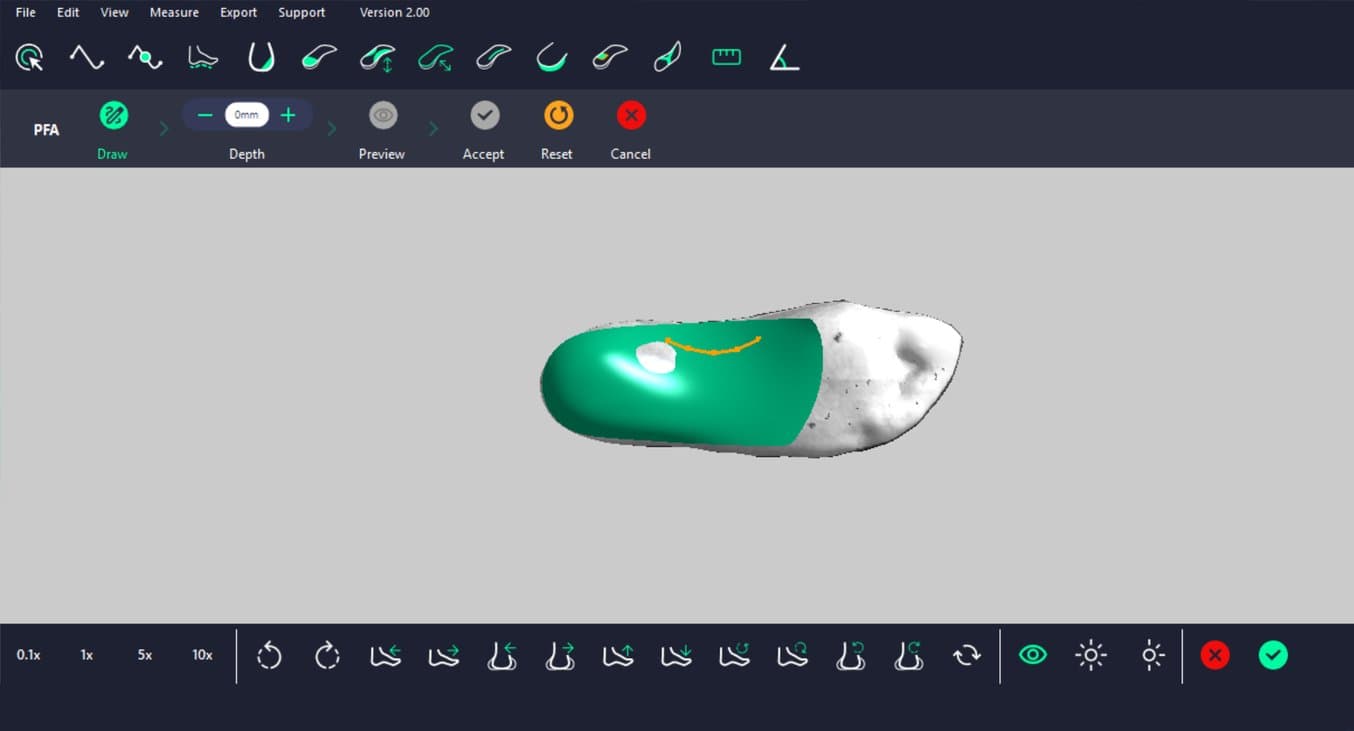
After designing an insole in LaserCAM, users can manufacture the design themselves, or send it to CADCAM Orthotics for production.
This flexibility allows the supply arm of the company, PodCAM Supplies, to work with healthcare providers and orthotics manufacturers to select the optimal systems for their business, all while utilizing LaserCAM software for the design of orthotic insoles.
Enabling Innovation
The benefits of 3D printing — cost-savings, efficiency, a cleaner workspace — ultimately add up to enable innovation. Job says, “Having a 3D printer in any workplace is fun for the staff because it allows you to innovate, to develop different products and prototypes that we otherwise would have had a real hard time making with CNC.”
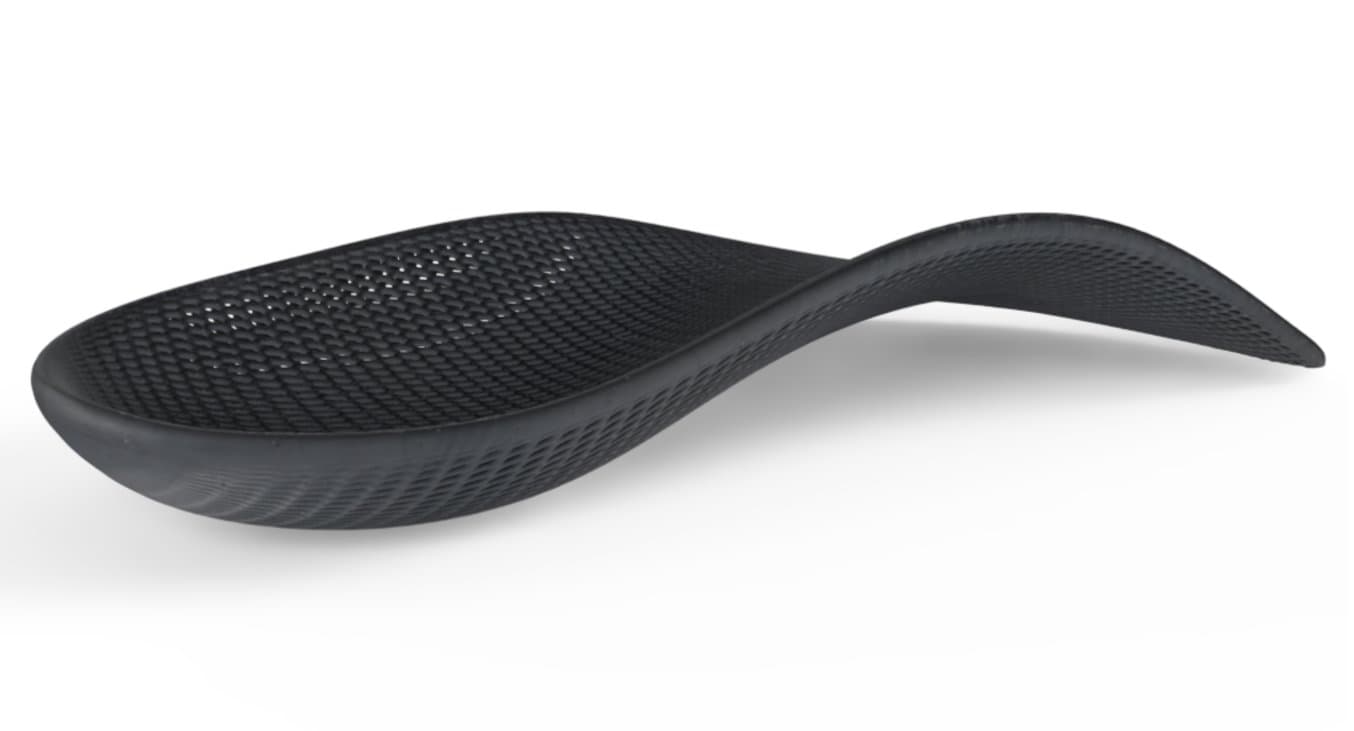
A latticed insole shows the versatility achievable with LaserCAM design and 3D printing.
With easier workflows, cleaner workspaces, and the mechanical properties of SLS powders, the Fuse ecosystem plus LaserCAM software empowers Job to push the boundaries of what’s possible when it comes to orthotic insoles.
To learn how the Fuse ecosystem can propel your production and innovation, talk to a 3D printing expert or request a sample insole printed on the Fuse 1+ 30W to evaluate the quality for yourself.


